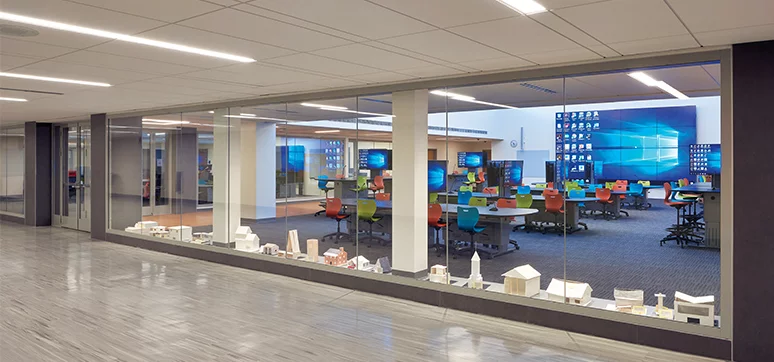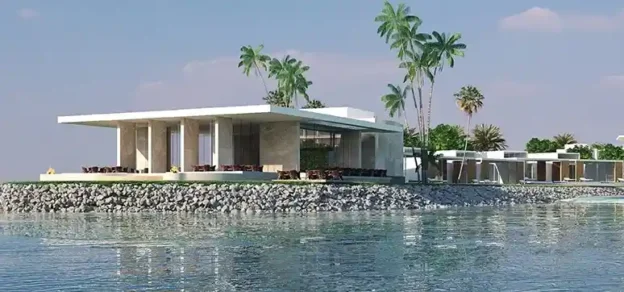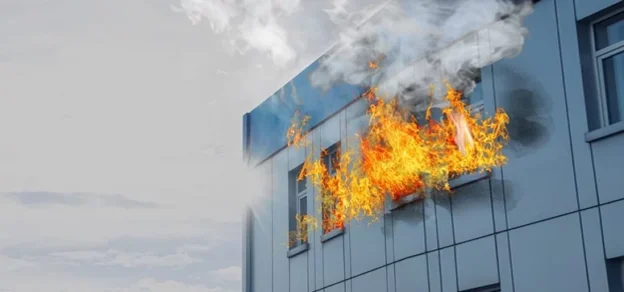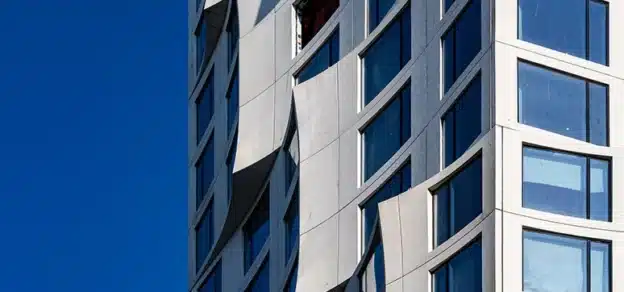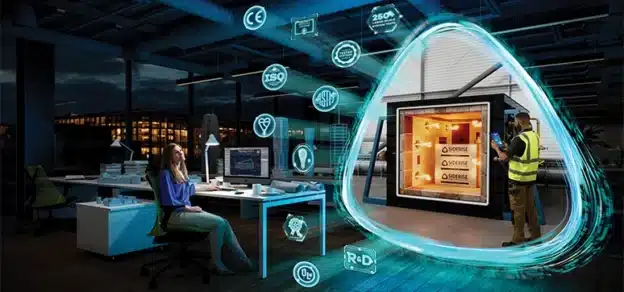As modern buildings continue to rise around the Middle East, the increasing presence of glass is hard to ignore. Efficient cooling systems, innovations in construction techniques and modern glazing methods and systems have all helped glass emerge as a design solution that integrates into the historical landscapes common to our region. Additionally, design professionals are pushing the boundaries of bold design, forcing manufacturers and suppliers to innovate alongside them to deliver beautiful building materials for beautiful buildings.
The benefits glass offers when used in the building envelope – openness and natural light – can transform internal spaces. Likewise, glass-filled interiors can improve visual connectivity, access to outside views and, as numerous studies show, occupant well-being. Design professionals want to capitalise on glass’ benefits, but this can be difficult with traditional fire-rated materials. Traditional fire-rated materials used to provide fire protection, such as concrete and gypsum, can block views and create the need for artificial light.
Architects and design professionals want to deliver a memorable design that also satisfies strict guidelines on proximity, consideration for excessive heat transfer and other regulations outlined in building codes. But how do design professionals deliver a beautiful space that features innovative design, yet satisfies the various life-safety requirements and building codes? The answer: fire-rated glazing. Recent improvements in materials and techniques marry form and function, making fire-rated glass a viable option for today’s buildings.
Fire Protection Versus Fire Resistance

For building designers to best utilise glass in a building’s interior and exterior design, it is helpful to first have a thorough knowledge of fire ratings, testing, and product classifications. Understanding how the complete fire-rated glass and framing system will perform in a fire emergency is integral to how space can be designed and ensuring the correct product use. Offerings that are intended to stop the spread of fire and smoke are issued fire ratings, which reflect the amount of time the material will maintain its integrity when exposed to heat and smoke.
Fire-rated glazing falls into two categories: Fire protective and fire-resistive glazing and each has its own unique traits. Fire-protective glazing defends against the spread of flames and smoke for a specific time. This designation is common to traditional wired glass, tempered glass and fire-rated glass-ceramic. Since it does not block the transfer of radiant and conductive heat, it is subject to area and size limitations under most building codes.
Fire-resistive-rated materials are subject to a more stringent performance method. These materials must also resist the transfer of heat, keeping the non-exposed side cooler and not subject to the high heat of a fire. For glass to earn a fire-resistive rating designation, it is put through the same tests as solid walls. These include stringent tests such as ASTM E119 “Standard Test Methods for Fire Tests of Building Construction and Materials” and Underwriters Laboratories, Inc.® (UL) 263 “Fire Resistance Ratings.”
Given these performance benefits, fire-resistant glazing assemblies are typically suitable where building codes require an assembly designated “fire resistant” to enclose a space. Examples include wall applications requiring a 60-minute or greater fire rating that must meet temperature-rise criteria, such as stairwells, exit access corridors or other fire barriers dividing interior construction. Due to its heat-blocking characteristics and classification as fire-resistive wall construction, fire-resistive glazing is not restricted to 25% of the wall area. This provides design teams with greater flexibility when working to create light-filled and inviting spaces that meet strict fire- and life-safety criteria.
The International Building Code (IBC) serves as the basis for many building codes. The IBC requires that a given fire-rated glass assembly must provide the same type of fire protection (e.g. fire resistance or fire protection) and carry the minimum fire rating as dictated by the code. This includes the frame, glass, seals and other components, so specifying compliant systems is crucial. When choosing which system to utilise, however, design professionals need to ensure the system has been tested as a wall and with all of the individual components as an assembly. Sourcing the fire-rated glass, framing and applicable hardware from the same supplier helps ensure a consistent and compliant fire-rated glazing system.
By utilising fire-resistant-rated glazing systems, design professionals can satisfy stringent IBC criteria and provide fire ratings up to 120 minutes where large spans of glazing are desirable. Today, there are a number of design-forward ways to create glossy expanses of glass while satisfying code criteria, from transparent fire-rated glass wall panels to fire-rated glass curtain walls. One attractive solution is butt-glazed fire-rated glass wall panels. They are the next step in a long evolution of products that more closely match the continuous glass wall aesthetic popular in non-rated glazing applications. In these systems, fire-rated glass panels are butt glazed together in a heat-resistive perimeter frame. The result is large, interior spans of glass free of vertical mullions, for a nearly seamless appearing partition.
Creating An Ideal Open Space

Demonstrating the benefits of advanced fire-rated glazing systems, the Kuwait National Petroleum Company (KNPC) turned to fire-resistive-rated glass for its newest administration building. The design team sought a solution that could provide open and collaborative space and would marry the life safety benefits fire-resistive-rated glazing offers with an innovative, minimalist design. KNPC sourced a solution that uses a silicone-sealed, but glazed design to provide a transparent expanse of fire-rated glass in its interior areas. Utilising low iron, fire-rated glass, the large panels feature nearly colourless transitions and offer fire ratings from 60- 120 minutes.
With proper selection, butt-glazed fire-rated glass wall panels can also complement the look of non fire- rated partitions or walls in the building. For example, systems with flexible options for the narrow butt-glazed joints and the perimeter frames enable design teams to match and suit the design needs of the project. This means the building interior can look quite consistent when fire-resistant glass assemblies are visible in the same general areas where non-fire-rated assemblies are allowable. Areas requiring fire-resistant glazing products can still enable a strong design intent and pattern.
Pushing The Boundaries, Safely
Design professionals in the Middle East are pushing to be on the cutting edge of building design, but improved fire and life safety will continue to be a driving force. As they integrate open and minimalist designs into new construction and retrofit existing buildings, the fire-rated glazing industry will work closely with them to deliver the vision they are seeking to create. The region’s continued adoption of the IBC and UL classified and labelled products allows architects and design professionals to push the boundaries of what is possible with exterior and interior glazing. As design professionals integrate current design trends, architects can be assured they will have the ability to specify a fire-rated glazing solution that enables them to follow these strict life safety requirements without sacrificing the original design aesthetics.
Note:
For more, see Heschong Mahone Group’s Windows and Offices: A Study of Office Worker Performance and Indoor Performance published by California Energy Commission in 2003, obtained from www.energy. ca.gov/ 2003publications/CEC-500-2003-082/CEC- 500-2003-082-A-09.PDF; and from Boyce, Peter; Hunter, Claudia; Howlett, Owen’s The Benefits of Daylight Through Windows on September 12, 2003, obtained from thedaylightsite.com/wp-content/uploads/papers/ DaylightBenefits.pdf.
